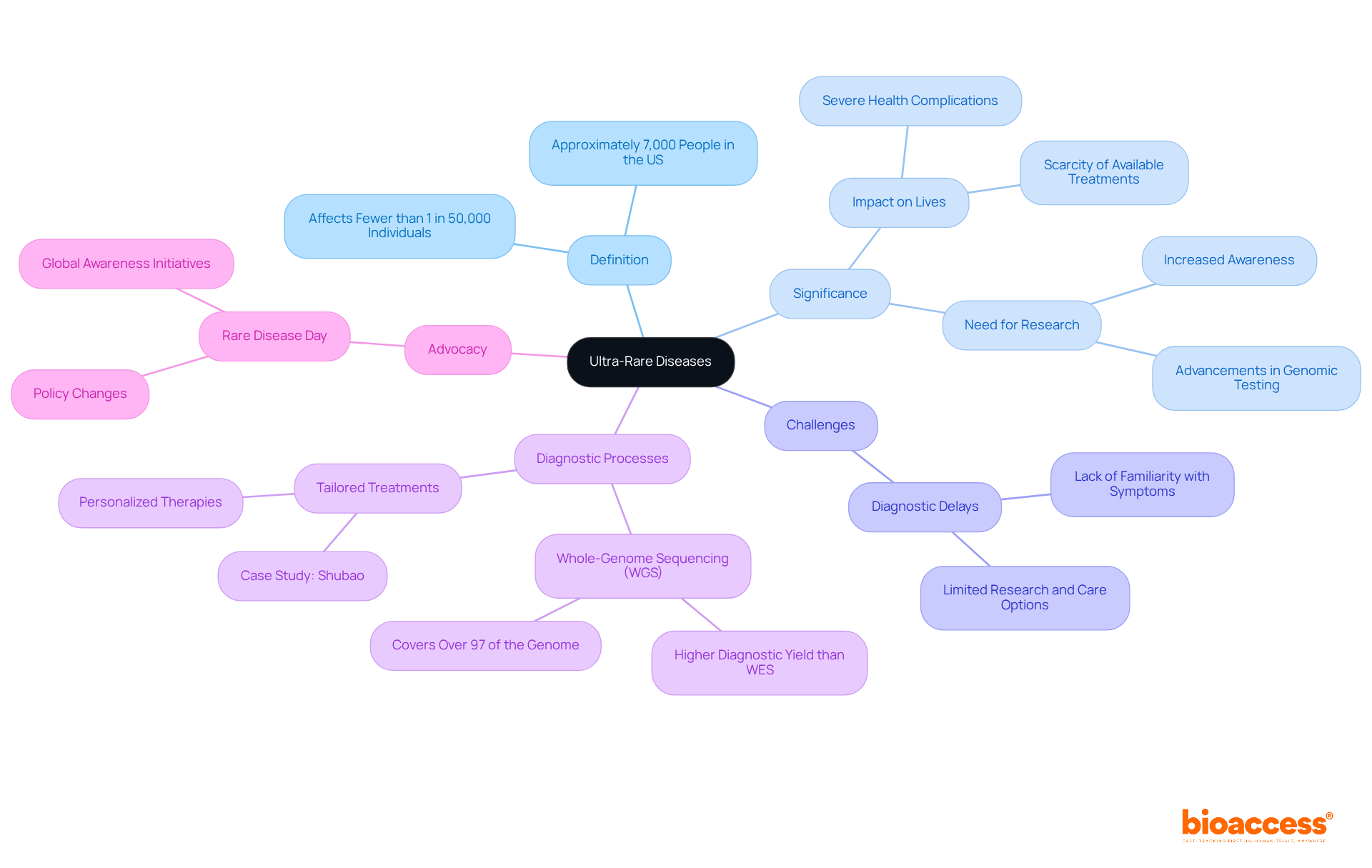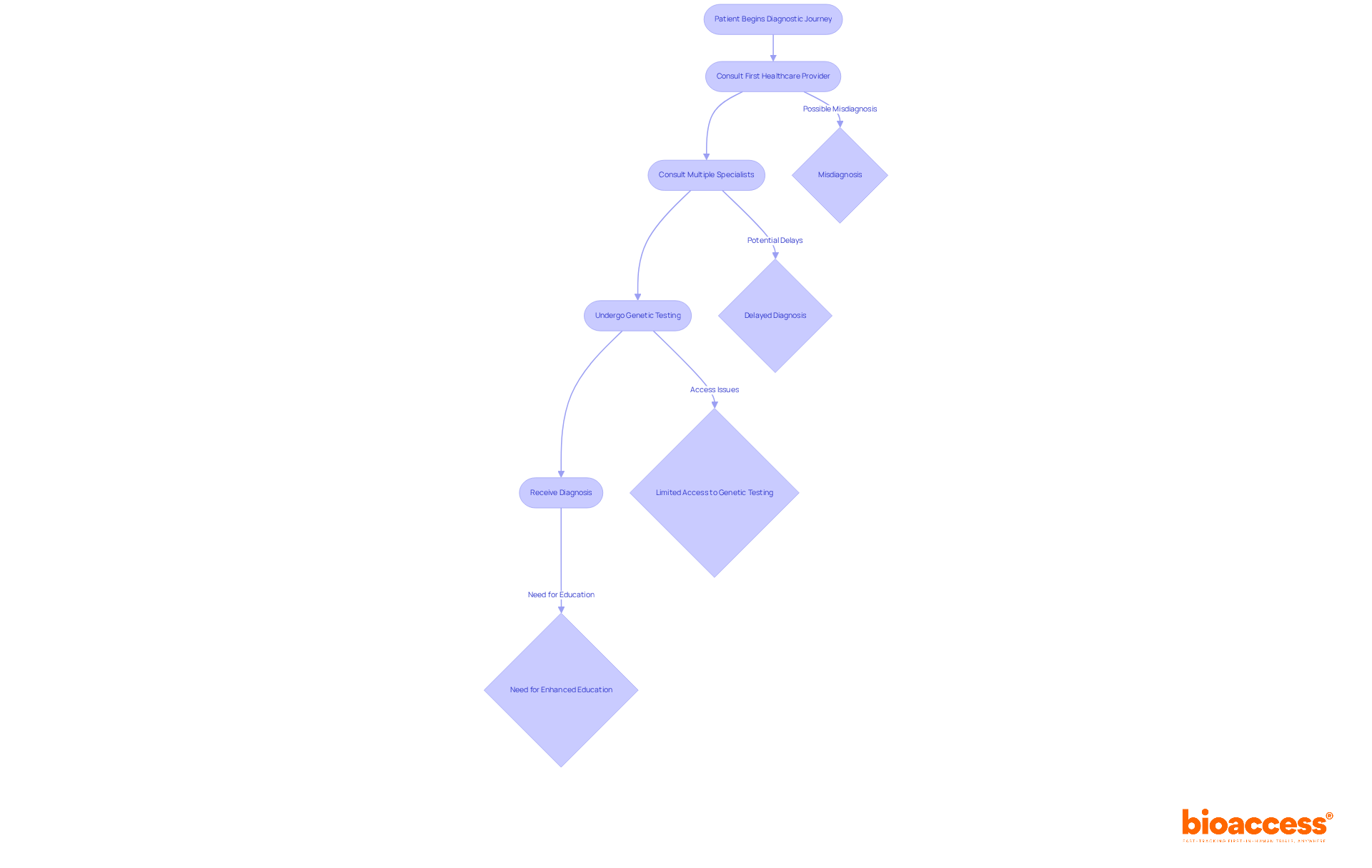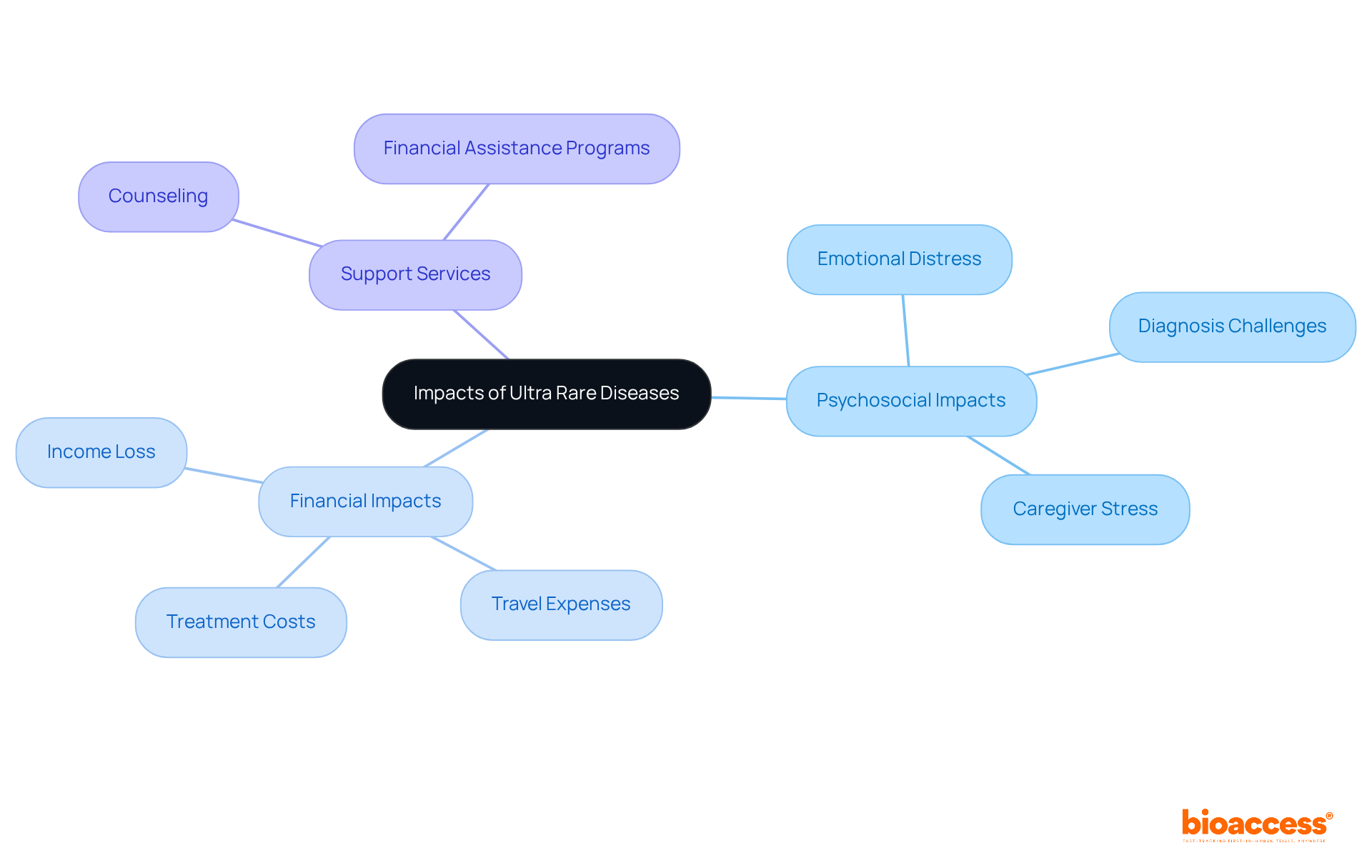


Ultra-rare diseases, defined as conditions affecting fewer than 1 in 50,000 individuals, pose significant challenges in diagnosis and management due to their low prevalence and the limited resources available for research and care. The importance of:
cannot be overstated in addressing these challenges. Increased awareness and advocacy are crucial for improving patient outcomes and access to treatment.
In the realm of clinical research, understanding the complexities of ultra-rare diseases is essential. The Medtech landscape plays a vital role in addressing these challenges, particularly through innovative solutions that enhance patient care. Collaboration among healthcare professionals, researchers, and advocates is imperative to drive progress in this field.
In conclusion, the significance of collaboration in tackling the multifaceted issues surrounding ultra-rare diseases is clear. By fostering a united approach and prioritizing research and advocacy, we can pave the way for improved outcomes and greater access to treatment for those affected.
Ultra rare diseases, affecting fewer than 1 in 50,000 individuals, pose a significant yet often overlooked challenge within the healthcare system. As advancements in genetic testing and telemedicine emerge, the potential for improved diagnosis and management of these conditions becomes increasingly apparent.
However, the journey for patients navigating the complexities of ultra rare diseases is fraught with delays, misdiagnoses, and financial burdens that can severely impact their quality of life.
How can healthcare professionals and advocates collaborate to enhance awareness, streamline diagnosis, and provide effective support for those affected by these elusive conditions?
Ultra rare diseases are defined as conditions affecting fewer than 1 in 50,000 individuals, which translates to approximately 7,000 people in the United States. These ultra rare diseases pose unique clinical challenges due to their low prevalence, which results in limited research and care options. The necessity of understanding ultra rare diseases is underscored by their profound impact on individuals' lives, often resulting in severe health complications and a scarcity of available treatments. Healthcare professionals note that the rarity of ultra rare diseases often leads to diagnostic delays, as many providers may lack familiarity with the symptoms or the requisite diagnostic tests.
For instance, whole-genome sequencing (WGS), which covers over 97% of the genome and demonstrates a higher diagnostic yield than whole-exome sequencing (WES), has been pivotal in identifying genetic variants in individuals with ultra rare diseases. This advancement enables timely and personalized therapies. Recognizing the importance of these conditions is crucial for developing effective management strategies and improving outcomes for patients. As highlighted by Tjerignimin Silue, understanding the mechanisms of rare diseases allows physicians to direct patients to appropriate specialists and select tailored therapeutics. This is illustrated by the experiences of patients like Shubao, whose customized treatment resulted in nearly immediate improvement following a prolonged diagnostic journey.
As we approach 2025, the focus on ultra rare diseases continues to grow, highlighting the need for increased awareness and research to enhance care and support for individuals affected by these conditions. Furthermore, initiatives such as Rare Disease Day have resulted in significant policy changes that affect thousands of lives across more than 80 countries, underscoring the importance of advocacy and awareness concerning ultra rare diseases.

Diagnosing ultra rare diseases presents significant challenges due to their low prevalence and diverse clinical manifestations. Many healthcare providers may lack familiarity with these conditions, which can lead to misdiagnosis or delayed diagnosis. The diagnostic process often involves a lengthy journey, commonly referred to as the 'diagnostic odyssey,' where patients may consult multiple specialists before receiving an accurate diagnosis. On average, individuals with uncommon conditions experience a diagnostic delay exceeding six years, involving nearly 17 healthcare visits.
Genetic testing plays an essential role in this process, as many extremely uncommon conditions have a genetic foundation. However, access to advanced genetic testing can be limited, and interpreting the results may require specialized knowledge. Furthermore, the economic burden of delayed diagnosis can reach up to $517,000 in avoidable costs per patient, highlighting the financial implications of these delays. The deficiency of knowledge and training among healthcare professionals regarding ultra rare diseases complicates prompt identification.
Therefore, enhancing education and resources for healthcare professionals is vital, alongside advocating for increased awareness and funding for research. This collaborative effort is crucial to improve diagnostic accuracy and speed, ultimately benefiting patients and the healthcare system as a whole.

Implementing effective management strategies requires a multifaceted approach for ultra rare diseases. Initially, forming a multidisciplinary care team that involves experts from various fields significantly enhances care by addressing the diverse needs of individuals. This team should comprise geneticists, neurologists, and other relevant specialists who can collaboratively develop treatment plans. Furthermore, utilizing telemedicine can improve access to care, especially for individuals residing in remote areas. Telehealth services facilitate consultations with specialists who may not be locally available. Notably, statistics reveal that telemedicine adoption surged by 600% from 2019 to 2021. Dr. Marshall Summar emphasizes this potential, stating, "There is a unique opportunity in the use of telemedicine to accomplish transformative actions for the diagnosis and care of individuals with rare conditions."
Moreover, advocacy organizations for individuals with extremely uncommon conditions play a vital role in providing support and resources. These organizations can assist in connecting patients to clinical trials and new therapies, as highlighted by Angela Ramirez Holmes, who remarked, "Patient advocacy is crucial in ensuring that individuals with rare conditions have access to the latest treatment options."
Lastly, continuous education and training for healthcare providers regarding ultra rare diseases are imperative. Individuals with uncommon conditions typically endure three misdiagnoses before receiving an accurate diagnosis, underscoring the need for heightened awareness and understanding among clinicians. Addressing the challenges and factors for physicians regarding telemedicine is also crucial, as it can enhance management and outcomes, ultimately improving the quality of care for this vulnerable population.

The psychosocial and financial impacts of ultra rare diseases on patients and their families are profound and warrant serious attention. Patients often endure emotional distress due to the uncertainty surrounding their condition, the challenges in securing a diagnosis, and the limited care alternatives available to them. Caregivers, too, experience significant stress as they navigate the complexities of managing their loved one's health while grappling with their own emotional and financial burdens. Financially, the costs associated with treatment, travel for specialized care, and potential loss of income can be overwhelming. Many families struggle to afford necessary therapies, particularly when they are not covered by insurance.
Incorporating psychosocial support services into the management of ultra rare diseases is essential. This includes:
Such support not only addresses immediate emotional and financial challenges but also significantly improves the overall quality of life for patients and their families.

Understanding ultra-rare diseases is crucial as they significantly affect a small percentage of the population, yet their impact on patients and families is profound. These conditions, defined by their rarity, pose unique challenges in diagnosis and management, necessitating a comprehensive approach that includes increased awareness, specialized care, and advocacy. The complexity of ultra-rare diseases demands that healthcare professionals be equipped with the knowledge and resources to provide timely and effective treatment options.
Key insights from the discussion highlight the diagnostic hurdles faced by patients, often leading to prolonged journeys before receiving accurate diagnoses. The role of genetic testing, multidisciplinary care teams, and the integration of telemedicine emerges as essential strategies for improving patient outcomes. Additionally, addressing the psychosocial and financial burdens associated with these diseases is vital for enhancing the quality of life for affected individuals and their families.
Ultimately, fostering a deeper understanding of ultra-rare diseases is not just a medical imperative but a societal responsibility. By advocating for better resources, funding for research, and support systems, the healthcare community can significantly improve the lives of those impacted. Engaging in these efforts ensures that the voices of patients are heard, and their needs are met, paving the way for advancements in treatment and care for ultra-rare diseases.
What are ultra-rare diseases?
Ultra-rare diseases are defined as conditions affecting fewer than 1 in 50,000 individuals, which is approximately 7,000 people in the United States.
Why are ultra-rare diseases significant?
They pose unique clinical challenges due to their low prevalence, resulting in limited research and care options, which can lead to severe health complications and a scarcity of available treatments.
What challenges do healthcare professionals face regarding ultra-rare diseases?
The rarity of these diseases often leads to diagnostic delays, as many healthcare providers may not be familiar with the symptoms or the necessary diagnostic tests.
How does whole-genome sequencing (WGS) help in identifying ultra-rare diseases?
WGS covers over 97% of the genome and has a higher diagnostic yield than whole-exome sequencing (WES), enabling the identification of genetic variants and facilitating timely and personalized therapies.
Why is understanding ultra-rare diseases important for healthcare providers?
Understanding these diseases allows physicians to direct patients to appropriate specialists and select tailored therapeutics, improving management strategies and patient outcomes.
Can you provide an example of a patient experience with ultra-rare diseases?
One example is Shubao, who experienced nearly immediate improvement following a customized treatment after a prolonged diagnostic journey.
What is the current focus regarding ultra-rare diseases as we approach 2025?
There is a growing focus on increasing awareness and research to enhance care and support for individuals affected by ultra-rare diseases.
What initiatives have been taken to support awareness of ultra-rare diseases?
Initiatives like Rare Disease Day have led to significant policy changes that positively affect thousands of lives across more than 80 countries, emphasizing the importance of advocacy and awareness.